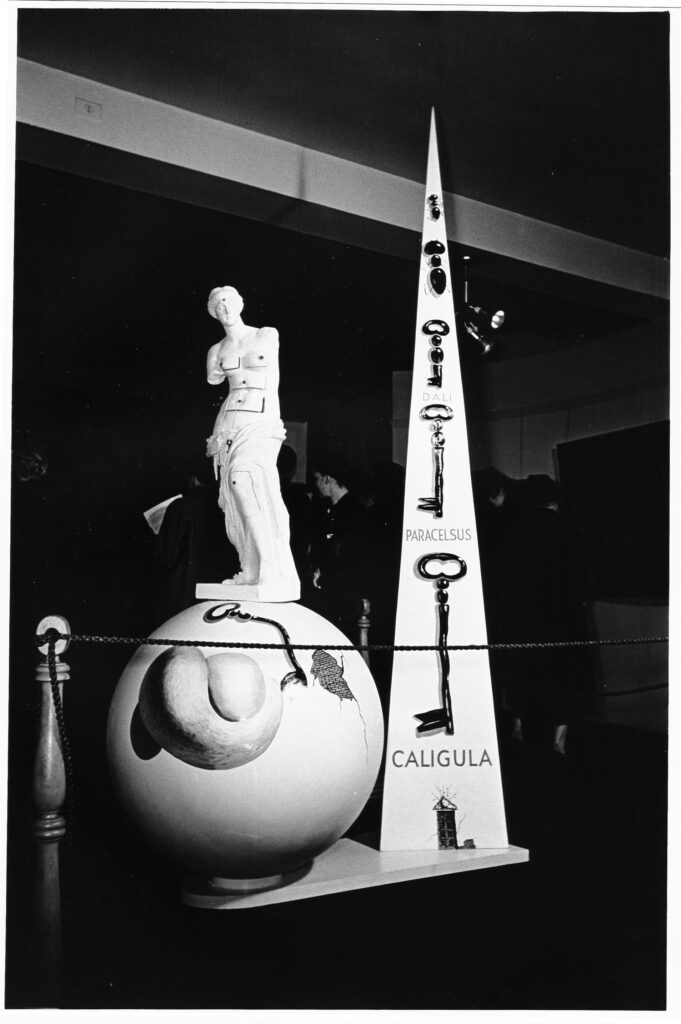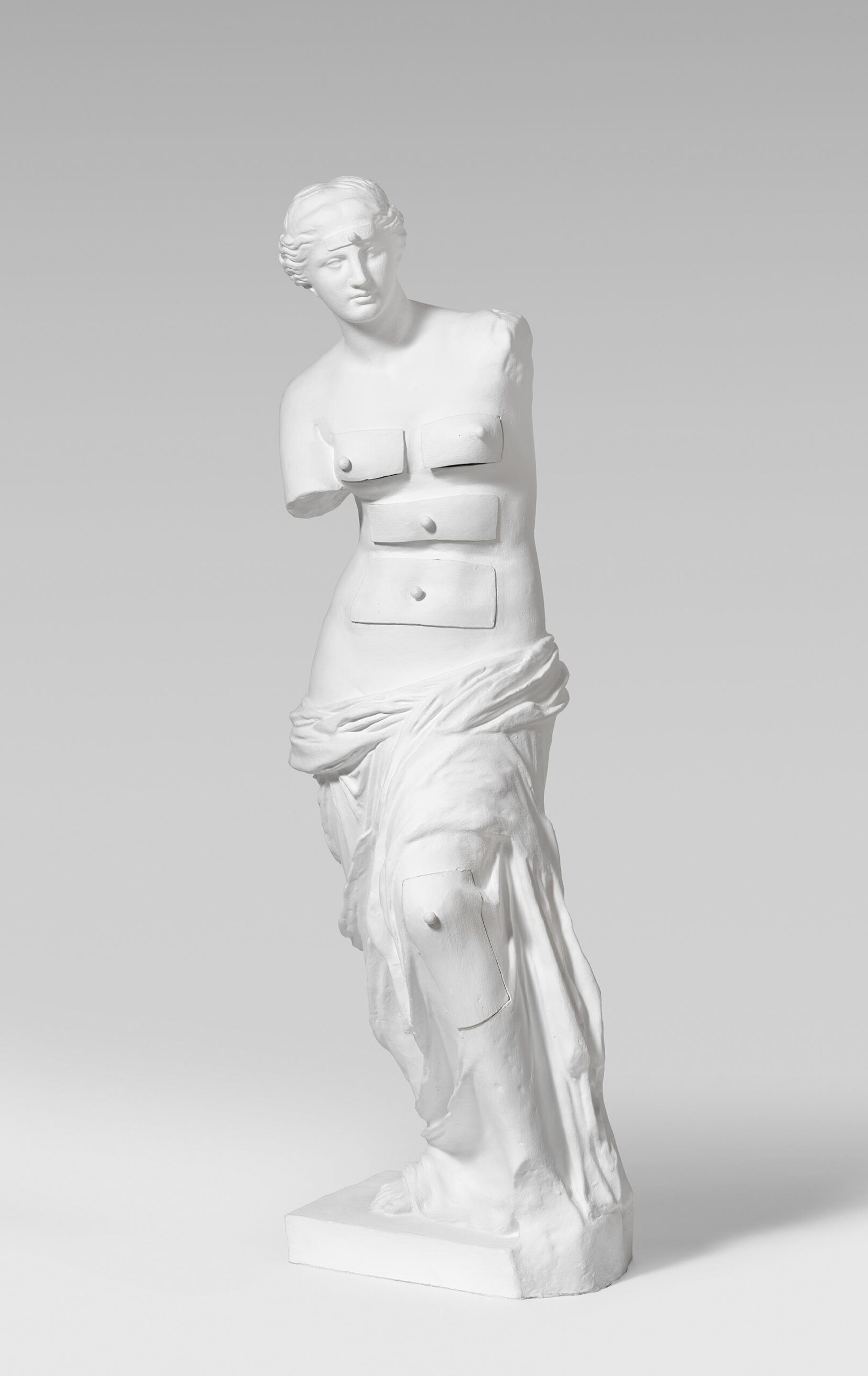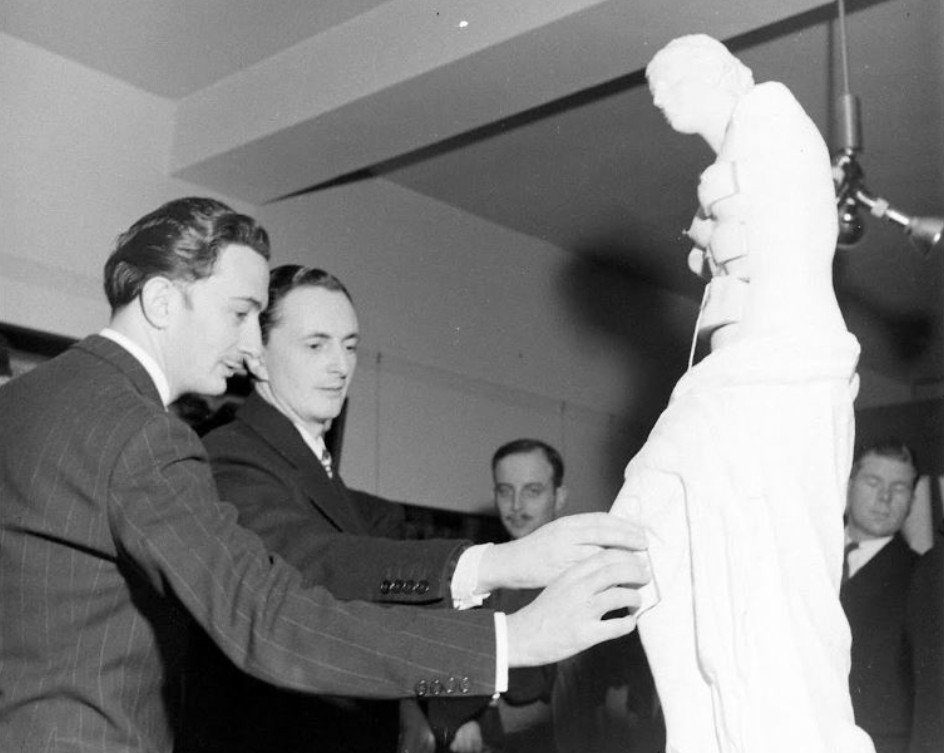A blend of tradition and surrealism
Dalí had always been fascinated by the Venus de Milo, having even made a copy of it in clay when he was just eight years old. In 1936, he turned this icon of Ancient Greece into a perfect blend of tradition and surrealism. And he did so transgressively – in a Dalinian way, one might say – by perforating the plaster body of his Venus, the goddess of beauty, love and sensuality, with six drawers that could be opened and closed.
Dalí gave meaning to this sculpture by noting, in reference to it, that ‘the only difference between immortal Greece and the contemporary era is Sigmund Freud, who discovered that the human body, which was purely Neoplatonic in the time of the Greeks, is now full of secret drawers that only psychoanalysis can reveal’. By incorporating these drawers into his Venus, the artist likely sought to invoke the subconscious and also, perhaps, the fears and contradictions of the modern human being.
Other 20th century artists also drew inspiration from the Venus de Milo to create their works. In the early 1920s, the dadaists Johannes Theodor Baargeld and Erwin Blumenfeld used the image in their photographic collages. Some surrealist artists were likewise greatly fascinated by this icon, as seen, for example, in René Magritte’s sculpture Les menottes de cuivre (The Copper Handcuffs), from 1931. In 1973, the Ready Museum in Brussels and the Musée des Arts Décoratifs in Paris held the exhibition ‘La Vénus de Milo ou les dangers de la célébrité’ (The Venus de Milo or the dangers of celebrity) to highlight the influence this sculpture had exerted on contemporary artists, including Dalí.
The presentation of the Venus de Milo with Drawers in New York
In 1939, the artist presented the Venus de Milo with Drawers to the public in New York, in a solo show held in March and April at the Julien Levy Gallery. At this point, Dalí added two keys hanging from the goddess’s neck. These elements were especially symbolic and, like the drawers, recalled the most genuine iconography of his surrealist paintings.

Keys are first found in Dalí’s work in La mémoire de la femme-enfant (The Memory of the Woman-Child), from 1929, whilst drawers first appeared in 1934, in works such as Invisible Harp or Singularities. The artist may have intended the keys of his Venus de Milo with Drawers as a visual metaphor for psychoanalysis, a means of tapping into the hidden subconscious of people’s ‘drawers’.
In any case, at the Julien Levy Gallery, Dalí presented this sculpture in the context of an installation – decorated with more keys and other Dalinian motifs – offering a small-scale version of the Trylon and Perisphere, the two monumental structures designed by the architects Wallace Harrison and J. Andre Fouilhoux for the Theme Centre of the New York World’s Fair, which was inaugurated in April 1939. Dalí had designed the Dream of Venus pavilion for that fair, with a façade featuring a large fish-headed Aphrodite, inspired by Botticelli’s The Birth of Venus. However, the organizing committee refused to allow him to use this transgressive image, prompting him to speak out on the rights of the artist by publishing his manifesto, Declaration of the Independence of the Imagination and the Rights of Man to His Own Madness.

A unique Venus de Milo with Drawers for the Dalí Theatre-Museum
In 1964, Dalí authorized a limited edition of bronzes of the Venus de Milo with Drawers, including the one currently conserved in the permanent collection of the Dalí Theatre-Museum in Figueres. The artist endowed the piece with certain unique characteristics that set it apart from the other casts from the edition, likely to make it a unique work of art, intended to be kept permanently at his museum.

Dalí wanted one of the bronzes of the Venus de Milo with Drawers, namely, the one identified as ‘Exemplaire Gala Dalí’, to be part of the works permanently on display at his Dalí Theatre-Museum in Figueres. Unlike the plaster sculpture from 1936 and the other casts from the 1964 edition, there are no pompoms on the knobs of the drawers of this cast. With this creative gesture, Dalí probably intended to distinguish the work at his museum from the other bronzes conserved around the world. Perhaps, he sought to turn this sculpture into a unique copy, one that condensed the physiognomy of the original work from 1936 – to which the pompoms were added only subsequently.
The artist placed the sculpture on the first floor of his Theatre-Museum, in a semicircular corridor in which visitors can also contemplate other objects evoking its genesis. These include, in particular, the display case with The Tragic Myth of Millet’s Angelus and the bust of Sigmund Freud, which crowns the space dedicated to Moses and monotheism, two key elements for understanding Dalí’s contribution to surrealism.
Exhibiting the Venus de Milo with Drawers in the 21st century
The 1936 Venus de Milo with Drawers is a plaster sculpture currently conserved at the Art Institute of Chicago. An exceptional and unique work, it is also quite delicate, due to the fragility of its material. In 2022, the Gala-Salvador Dalí Foundation requested the loan of this work from the Art Institute of Chicago, for a temporary exhibit at the Dalí Theatre-Museum. Specifically, it requested a digital loan, to ensure the work’s conservation.

The temporary exhibition ‘Transgressing Venus’, organized by the Gala-Salvador Dalí Foundation in 2022 at the Dalí Theatre-Museum in Figueres, exceptionally brought together the plaster Venus de Milo with Drawers from Chicago and the bronze cast from the Theatre-Museum’s own collection.
It did this by presenting the sculpture from the Art Institute of Chicago in digital format, by means of an innovative technology. Specifically, high-resolution photographs were used to produce a holographic recreation of the sculpture, into which 360º animation was digitally introduced. This three-dimensional creation was then projected on a transparent LG T-OLED screen, allowing visitors to take in all the details of the work, which is conserved in the United States, from a gallery of the Dalí Theatre-Museum in Figueres.
With this digital loan, the Gala-Salvador Dalí Foundation seeks not only to embrace the use of technological resources in the sphere of exhibitions, but also to reaffirm its commitment to the sustainability of international loans and the preservation and conservation of original works of art.